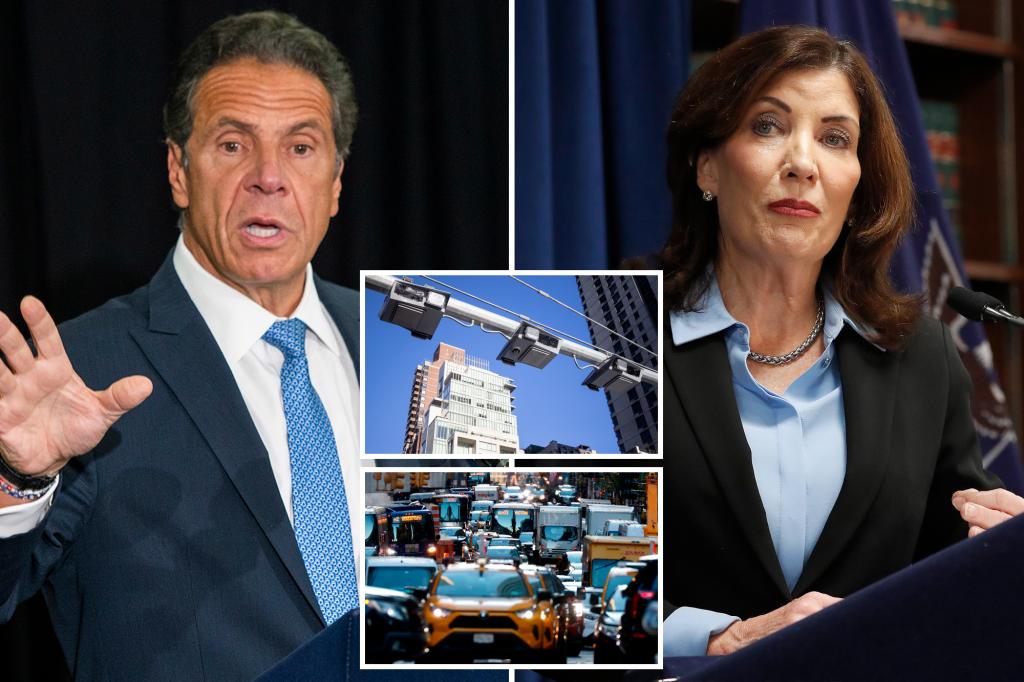Andrew Cuomo’s Shift on Congestion Pricing
Former New York Governor Andrew Cuomo, once a champion of congestion pricing, has publicly reversed his stance on the impending $9 toll to enter Midtown Manhattan. This marks a significant shift for Cuomo, who spearheaded the effort to pass the nation’s first congestion pricing plan in 2019. His initial aim was to utilize the revenue generated from the toll to bolster the city’s mass transit system and alleviate traffic congestion within Manhattan’s central business district. However, citing the city’s fragile post-pandemic economic recovery and escalating concerns over subway safety, Cuomo now argues that the timing for implementing such a policy is inopportune. This reversal comes as Cuomo contemplates a political comeback, potentially vying for the New York City mayoralty.
Cuomo’s spokesperson, Rich Azzopardi, clarified that while the former governor still views congestion pricing as a sound policy in principle, he questions its appropriateness given the current circumstances. Azzopardi emphasized the importance of a reliable and safe subway system for congestion pricing to be effective. He pointed to the public’s diminished confidence in the subway, coupled with New York City’s ongoing post-COVID recovery, as factors that warrant a thorough data-driven impact study before implementing such a substantial policy change. This study, according to Azzopardi, should inform the timing of the toll’s implementation and ensure it does not hinder the city’s resurgence.
Hochul Administration’s Response and Cuomo’s Rationale
Governor Kathy Hochul’s administration swiftly responded to Cuomo’s change of heart, attributing the necessity of the toll to the "gubernatorial mismanagement" of Cuomo’s tenure. Hochul’s spokesperson, Avi Small, highlighted the fact that Hochul inherited the congestion pricing legislation two years after its enactment and subsequently worked to reduce the initially proposed $15 toll to $9. He credited Hochul with addressing the challenges at the Metropolitan Transportation Authority (MTA) left by Cuomo’s administration.
Cuomo’s reversal on congestion pricing aligns with his previous expressions of concern about the toll’s potential negative impact on the city’s recovery. He articulated these concerns in a March op-ed, arguing against the implementation of congestion pricing at a time when the city was grappling with economic instability and rising subway crime. His current stance reinforces these concerns, despite the toll reduction from $15 to $9.
Public Opinion and Political Implications
Public opinion on the congestion toll remains divided. A recent Siena College poll revealed that a majority of New Yorkers (51%) oppose the toll, while only 29% support it. This widespread opposition reinforces the political complexities surrounding the issue. Opponents of the toll, including Rep. Nicole Malliotakis, while acknowledging Cuomo’s change of stance, point out his responsibility for signing the legislation into law. They criticize him for championing policies they believe have negatively impacted public safety, such as bail reform and sanctuary city policies.
The political implications of the congestion toll extend beyond state politics. Rep. Malliotakis and other opponents are appealing to President-elect Donald Trump, a known critic of congestion pricing, to intervene and halt the toll’s implementation, which has received approval from the Biden administration. They believe that legal avenues exist for Trump to intervene and stop what they characterize as a "cash grab" that will impose significant financial burdens on commuters.
Stakeholder Perspectives and Future of Congestion Pricing
Despite public opposition and Cuomo’s shift, the congestion toll retains support from transit advocates, environmental groups, the Regional Planning Association, and the Partnership for the City of New York, a prominent business advocacy group. These groups see the toll as a crucial mechanism for funding much-needed improvements to the city’s mass transit system and reducing traffic congestion. The MTA also has the authority to increase the toll by 25% on days of high traffic congestion, although Governor Hochul recently decided against implementing this surcharge, likely in response to public outcry.
The future of congestion pricing in New York City remains uncertain. The conflicting viewpoints of key stakeholders, coupled with divided public opinion, create a complex landscape for this policy’s implementation. The ongoing legal challenges and potential intervention by the incoming presidential administration further complicate the matter. As the toll’s implementation date approaches, the debate surrounding its merits and potential consequences continues to intensify, highlighting the significant economic, social, and political ramifications of this unprecedented policy.

